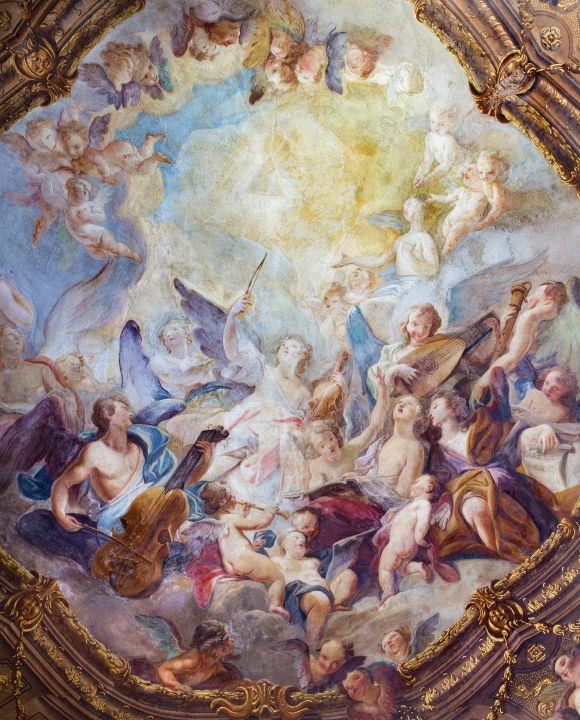The Second Nicaean Council decreed in 787 A.D. that depicting angels in both paintings and sculpture was legal. This decision of the early Church changed the total evolving of Christian angelic imagery. It left much of the responsibility for expressing angelic form in the hands of artists. This brought with it a surprising side effect. The role of artists during the Renaissance was to explore the world through a new point of view. The painters and sculpturers of this time were a catalyst. They challenged all the traditional ways of perceiving life and time and space long before the theologians and philosophers. Eventually the Church realized that the tangible, solid, and realistic images that donned their walls and ceilings were bringing down the old traditional order.
However, if we look at the 8th century as the original thoughts on angels were coming together, we see that the primary sources were not Christian at all, but pagan. The two major images which intrigued artists were the classic Greek examples of Nike, the winged Victory, and depictions of a winged Eros. It is fitting that Eros as Love, or his Roman counterpart Cupid, should encompass the image of later angels of mercy and love.
The Renaissance was full of paradoxes. While angels became less important in the eyes of theologians and Church thinkers, they became more real and human in the interiors and exteriors of church buildings. Michelangelo depicted them without wings in his masterpiece the Last Judgment in the Sistine chapel. But Michelangelo was ahead of his time in giving his angels corporeal form. The Church rebelled against the idea that angels had gender. The clergy clung to the concept of sexless angels. The Curia went as far as to order all traces of gender removed from angels presented in human form.
 |
| File Photo |
Since the Renaissance the continuing evolution of the depiction of angels has been abruptly halted. The way we view them today is basically the way they were depicted during the height of the cultural rebirth which started in 14th century Florence. Our current perceptions of angels come from angelic folklore as well as official Church teachings. Whether it be the depiction of Michael and his powerful sword subduing Satan, or Gabriel and his horn leading the choirs of angels, art has been an important contributary component of the body of angelic knowledge and the way in which we perceive the way angels look.
